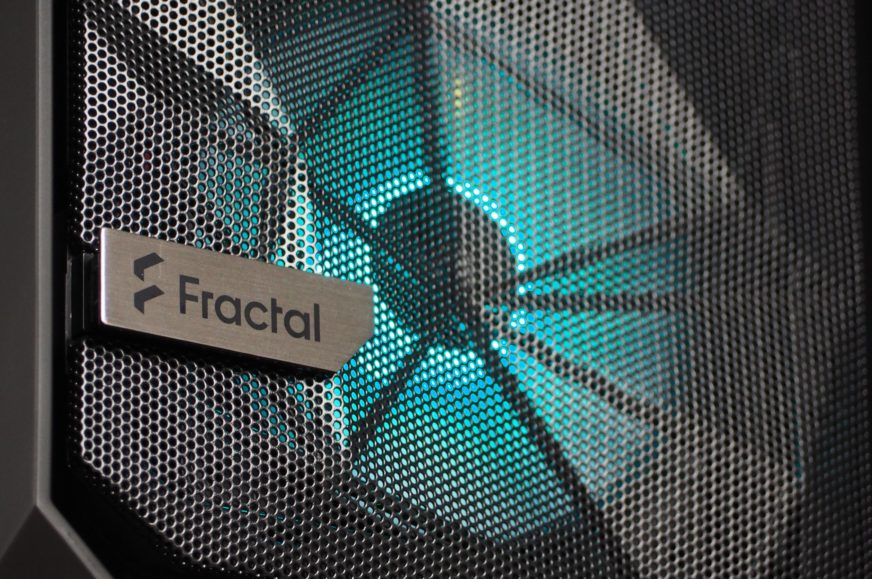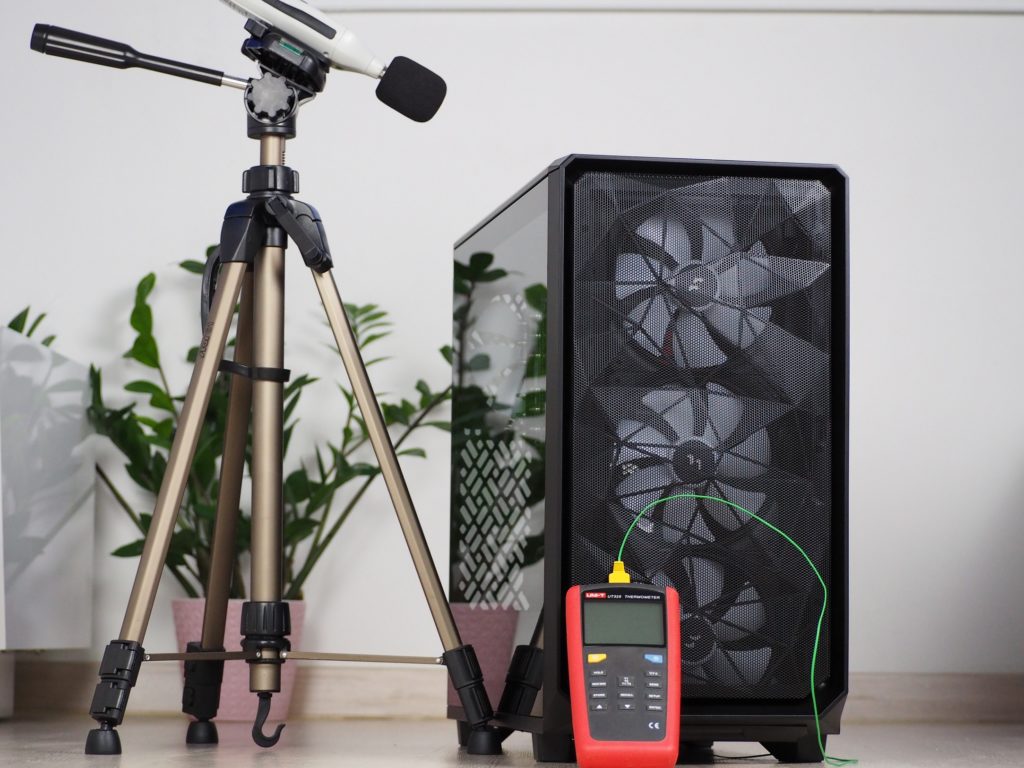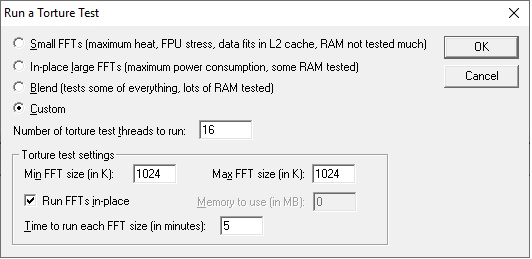Test methodology
There is no let up in the downsizing of cases and it goes on. Now Fractal Design has worked on a simpler version of the Meshify 2 Compact, to which we gave a rare editorial award a while back. The skeleton of the case has remained the same, the materials used have not changed, but in some places, cuts have been made. And in other places, improvements have been added. In our analysis we have looked at the case in the Lite RGB variant.
Test methodology
The case with the Lite RGB designation uses three 120 mm fans from the Aspect series on the intake instead of two 140 mm Dynamic fans compared to the original version. Also, the Lite version lacks the obstacle of a fine dust filter, which may help the case’s cooling over the Meshify 2 Compact. But we’ll see how it turns out in the charts after the tests are done.
For testing purposes, we always leave the fans in their original positions.
Testing is done in a home environment where I strive for the most accurate results possible. In the room during testing, the air temperature in front of the case is 23 degrees Celsius and the minimum noise level I can measure with the Voltcraft SL-100 noise meter is 32.4 dBA. The sensor of the noise meter is aligned to the center of the top of the case at a distance of 10 cm, for the best measurement of the speed difference of the fans, which I change using the motherboard. For easy comparison to other cases, they are always regulated to fixed noise levels.
Individual components are heated for 10 minutes in FurMark synthetic stress tests and with Prime95 (custom settings) at the same time. This time is long enough to allow all components to warm up sufficiently. There are then 15-minute cooling breaks between tests, during which the component temperatures (and the case air temperature as well) are brought back to default.
Modes noise levels:
- 36 dBA
- 38 dBA
- 39 dBA
| Test setup | |
| Processor | AMD Ryzen 7 3700X |
| Motherboard | Asus ROG Strix X470-I Gaming |
| CPU cooler | Scythe Fuma rev. 2 (single fan) |
| Thermal compound | Noctua NT-H2 |
| Graphics card | Asus RTX 2060 Super Dual |
| RAM | Patriot, 2× 8GB, 3600 MHz/CL17 |
| SSD | Western Digital Blue 500GB (2280) |
| Power supply | Corsair RM750X |
- Contents
- Exterior
- Interior
- Test methodology
- CPU and GPU cooling tests
- Motherboard cooling tests
- SSD cooling test and temperature underneath the ceiling
- Conclusion














Hi!
My friend is building her first pc and is really struggling with the rgb lights on this exact case. She still has the Sata cable and she doesn’t know where to plug it in… We can’t find any info on this exact case and no one knows how to fix it. Could you tell me how your rgb lights work and where everything is plugged in?
thanks!
Hello. The SATA cable that she has left over from the case powers the lighting for the fans. She also needs to have the SATA cable (female) coming out of the power supply, where she plugs the one from the case (male). If she has the fans properly wired in series and the first connector comes from the I/O panel, then her fans should already light up. Let me know if your friend has succeeded.